DJI Osmo Action 4 review
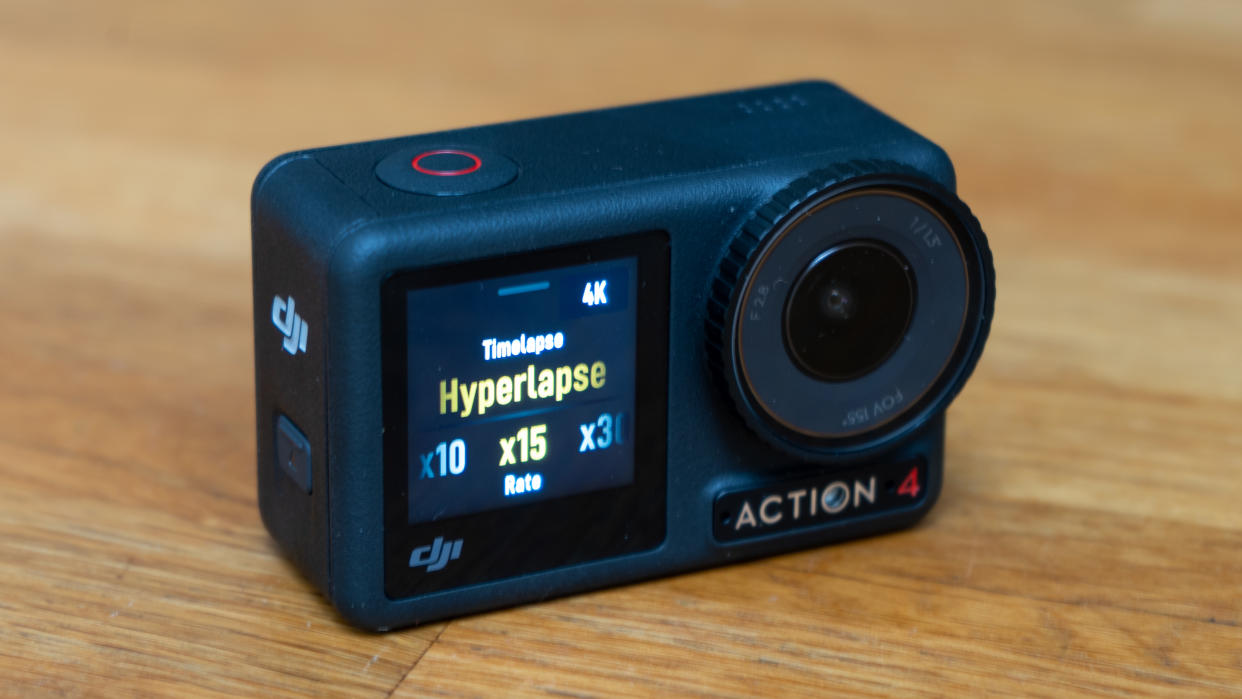
DJI is most famous for its drones, but that is far from the only string to the company's bow. Undoubtedly the investment in producing a stable image from a rapidly vibrating and leaning gravity-defying box has helped the firm develop the tech for other lines including the DJI Pocket, camera gimbals, and the DJI Action series.
The latter is, as the name suggests, an Action camera. In its relatively short life (compared to market leader GoPro), DJI have made some serious attempts to innovate in the space, not least the quirky Osmo Action 2 which separated into a battery and camera unit. When used without the extended battery, this made the Action 2 much smaller than a GoPro.
This model's predecessor, the Osmo Action 3, however, reverted to a more familiar single housing with a removable battery. It seemed a bit of a shame, but solved a lot of issues with waterproofing. The camera boasted powerful electronic image stabilization with horizon balancing and was generally well received – with the proviso that the low-light imaging could have been better.
Step in the DJI Action 4 which – at first glance – looks exactly like the Action 3. Even the spec sheet is very similar with one big exception. A significantly bigger image sensor. So, is that enough to worry GoPro?
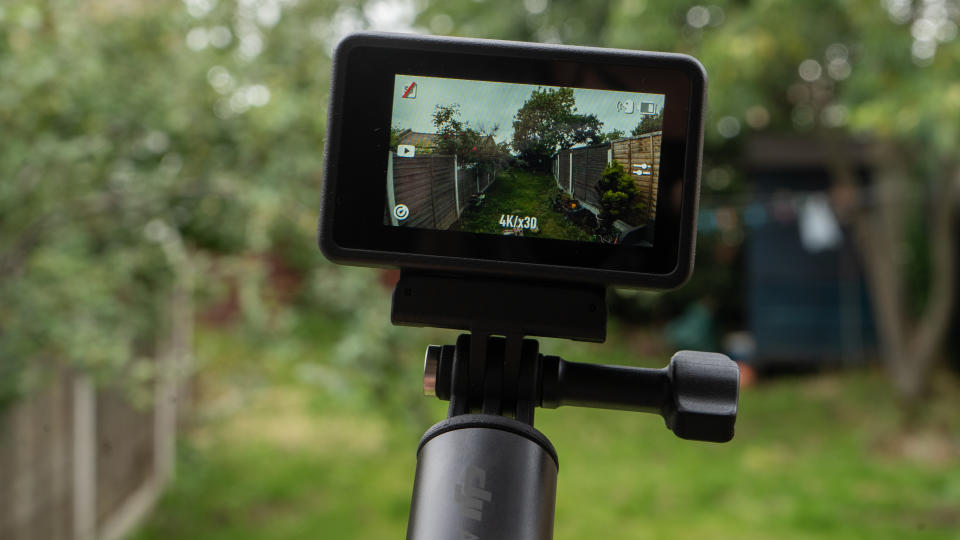
Specifications
Image sensor: 1/1.3-inch CMOS
Field of view: 155˚
Aperture: ƒ/2.8
Focus range: 0.4mm to infinity
Max video resolution: 4K
Maximum frame rate: 120fs at 4K, 240fps at 1080P
Photo resolution: 3648 x 2736 px
Waterproof: 18m / 60ft
Storage: microSD (records at 130Mbps)
Displays: Main 2.25-inch 360 x 640px, Front 320 x 320px
Microphones: 3
Weight: 145g
Dimensions: 71 x 44 x 33mm
Key features
Make no mistake, the 1/1.3-inch image sensor, boasting 2.4μm-equivalent pixels is the Osmo Action 4's stand-out feature; the main generational change which makes it a more powerful action camera than its predecessor (and is a lot bigger than the GoPro Hero 11's much-discussed 8:7 sensor). You can shoot in horizontal or vertical as you choose.
Along with it comes DJI's HorizonSteady image stabilization which can keep the horizon level through 360 degrees of camera rotation or be set to switch once the camera passes 45 degrees. There is also RockSteady 3.0+ and other features, which depend on the camera settings.
The camera can capture video in 10-bit D-Log M, opening access to billions of colors for image editing, and the battery offers up to 2.5 hours of recording time and fast charging. It also comes with DJI's magnetic mount system and streamers will love the built-in wind-reduction using three microphones as well as the WiFi live streaming tools (which can use your phone's hotspot).
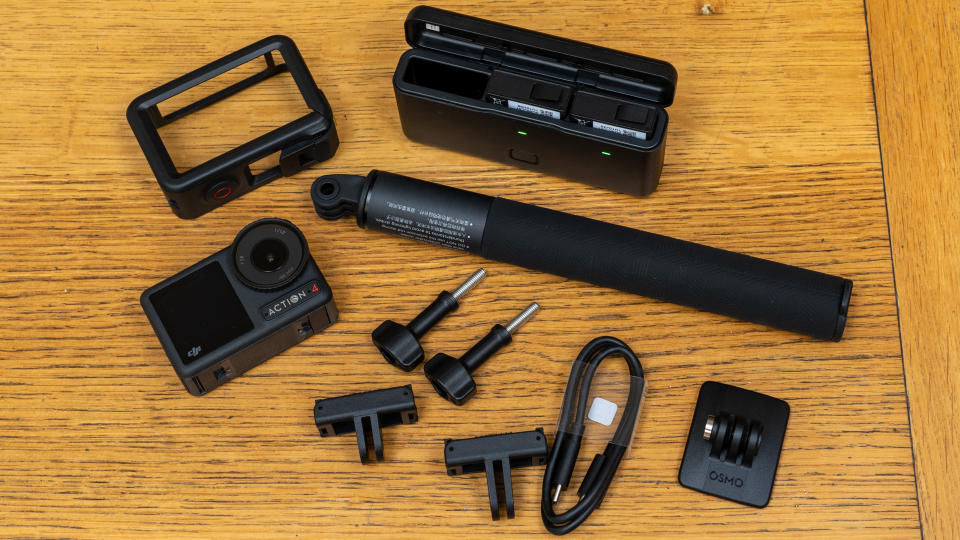
Build and handling
When I reviewed the Osmo Action 3 there was much I had to write about the switch of form factor, but here virtually nothing has outwardly changed. Without the clear branding on the front – the 'o' in the word Action conceals one of the three microphones – you'd likely mistake the device for its predecessor.
That's not a bad thing per se. The action camera (with a lower-case 'a') is a very established design, and because DJI's 'Quick-Release Adapter Mount' is compatible with the same thread as most GoPro attachments, extremely versatile even if DJI themselves don't provide an accessory.
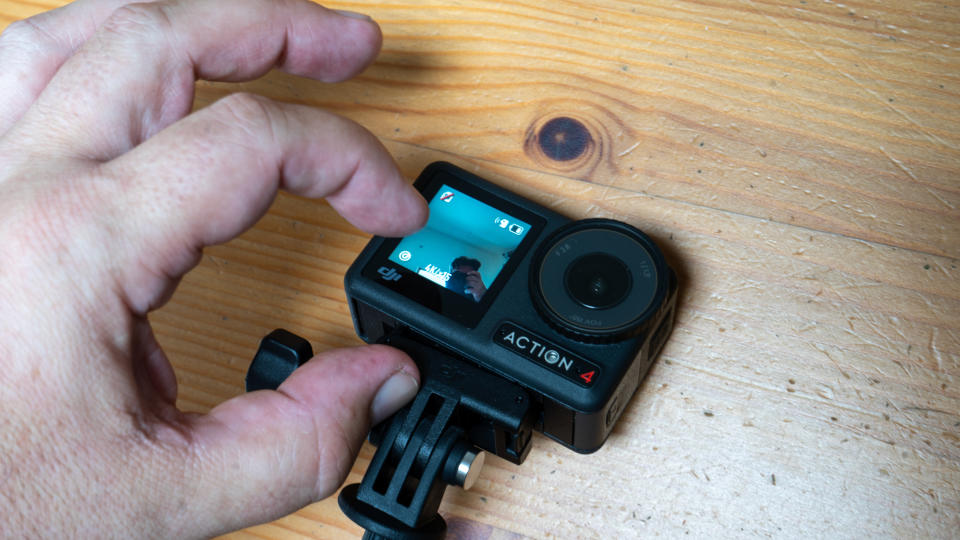
The device itself has waterproof doors for a USB-C socket on the side of the lens end, and one for both battery and microSD opposite it. You'll need one, as there is no built-in storage. The body has only a shutter button at the top and a power button on the side, though both the front and back have color touchscreens at over 320ppi.
The wide angle lens (155˚ in theory, which is 12.7 EFL) protrudes from the front. Of course, the actual angle of view depends on the image stabilization options you choose, which brings me to how you operate the device.
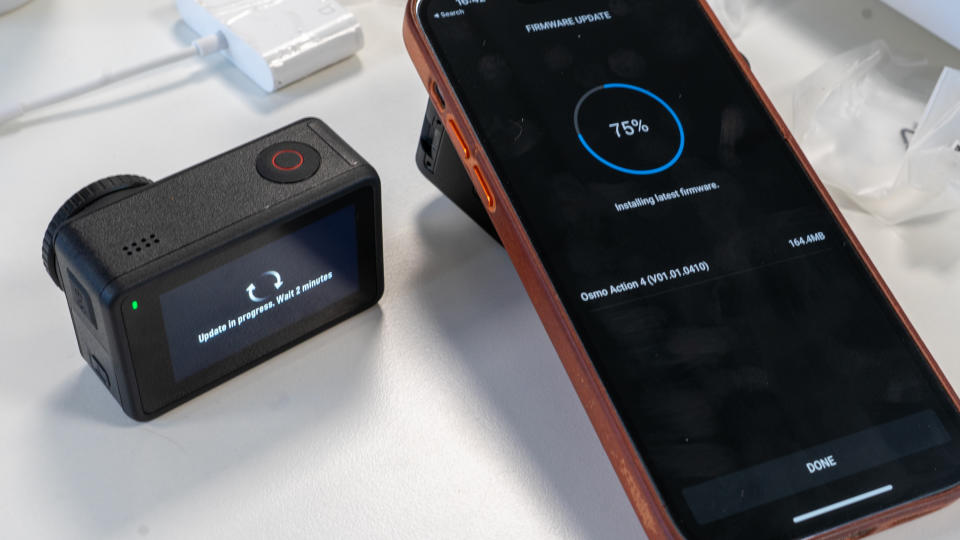
The camera really wants to be friends with your phone. My pre-release version gave me just five opportunities to use it before insisting I pairing the camera with the app, DJI Mimo, on my phone. On the plus side that's not the same as aggressively pushing a paid cloud subscription (though it will offer you DJI's insurance). In the moment it is infuriating, but having the app unleashes a lot more functionality, like live streaming and live viewing / remote control of the camera.
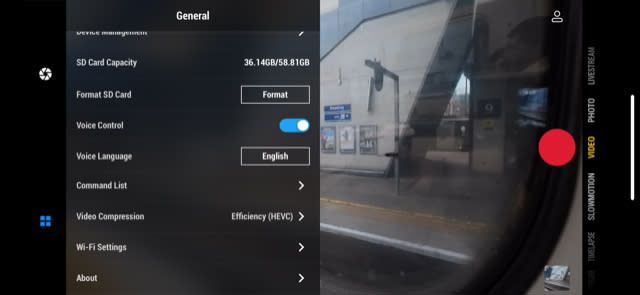
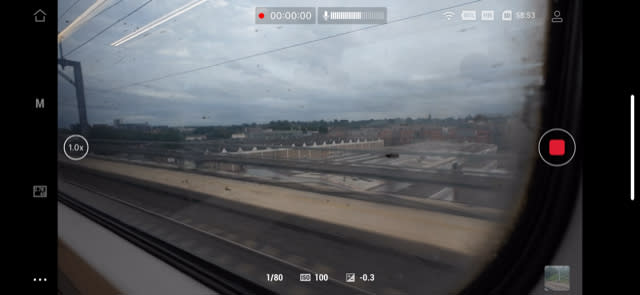
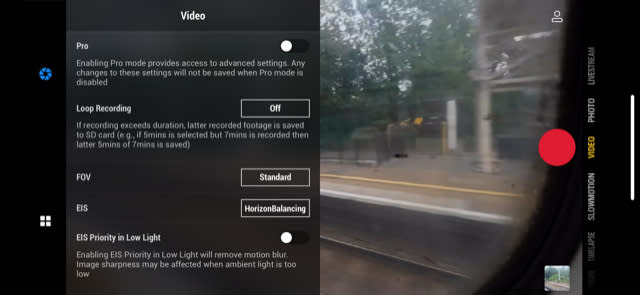
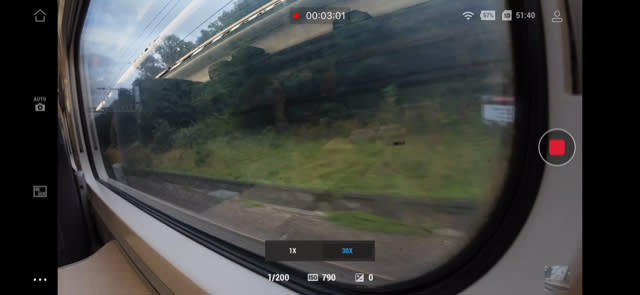
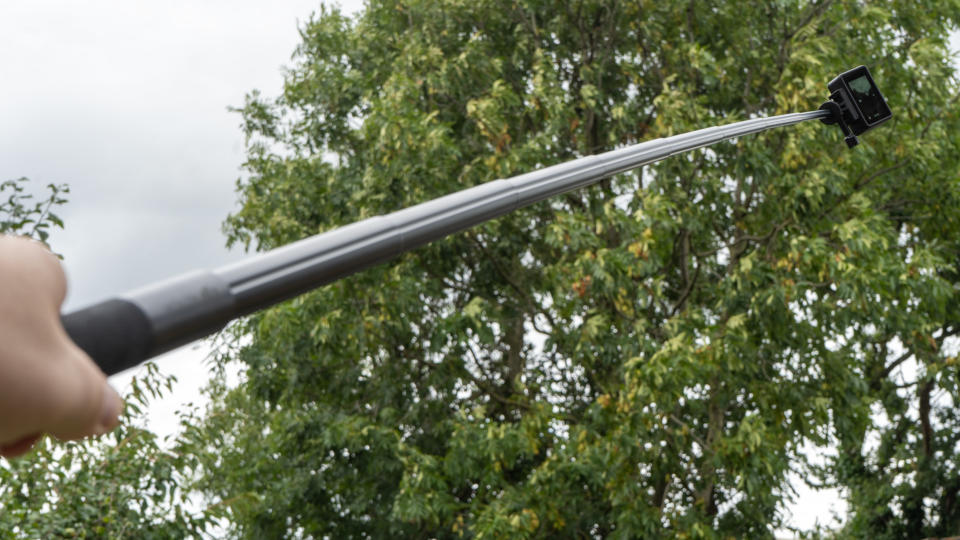
DJI offer a number of bundles including the Adventure Combo – which I tested. This includes a three-battery charger (the same one as the Action 3, in fact), a 1.5m extending pole, two locking screws, an adapter mount, an adapter mount mini (yes, two different sizes of a very similar item), a curved adhesive base (e.g. for a bike helmet) and a USB-C cable to connect to the charger or camera.
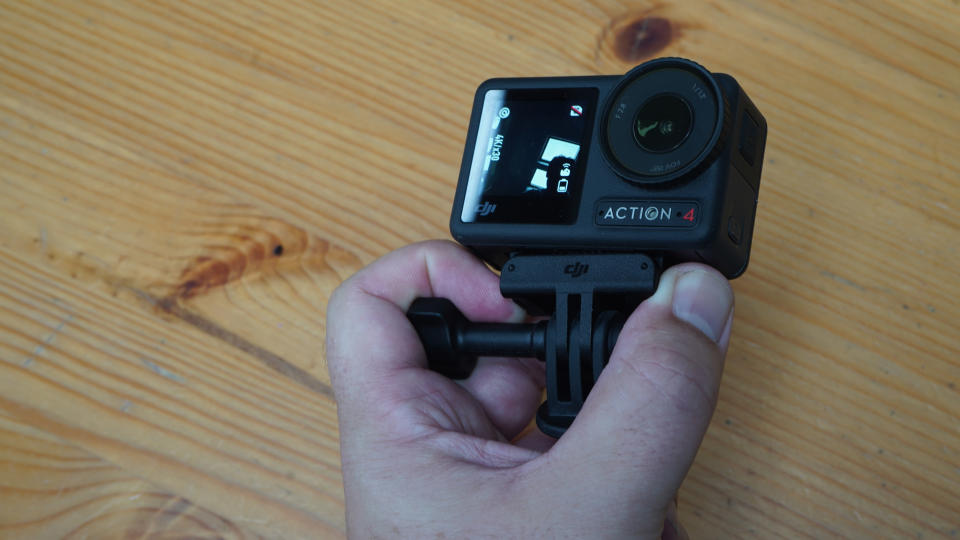
DJI's magnetic mounts did have a couple of issues for me. One was very much bad luck – an oven try was wafted over one as it lay out on the surface and it managed to attach itself and cook for 15 minutes at 210˚C (410˚F). Actually, surprisingly, other than the plastic coating the magnets, it survived, though obviously it is no longer waterproof. The other was that getting my chunky finger round the locking screw to unclip it wasn't easy (they clip into place once the magnet pulls it into place).
Performance
Since ruggedness should be a given – and the Osmo Action 4 seemed to have no problem going in and out of water in my (admittedly not 18m depth) testing, the crucial issues here – as for any action camera – are image quality and image stabilization.
In terms of quality, the picture is good. The stills I took showed a good range of detail and the camera's auto mode could generally be trusted to handle the settings (manual exposure options are there to be had though – DJI calls this 'Pro' mode).
I did note that when I tried Hyperlapse – fun because you can switch in and out of timelapse as you record – the auto exposure seemed to shift ISO a little more rapidly than I might have, bt to be honest the results seemed OK and I was pointing the camera from a 125mph train window so there was a lot of rapid change in the lighting!
Resolution-wise, the GoPro is already in the lead, offering up to 5.3K resolution. For most, however, the image quality at 4K is much more significant and the Osmo Action 4's image sensor does show its quality, especially in low light.
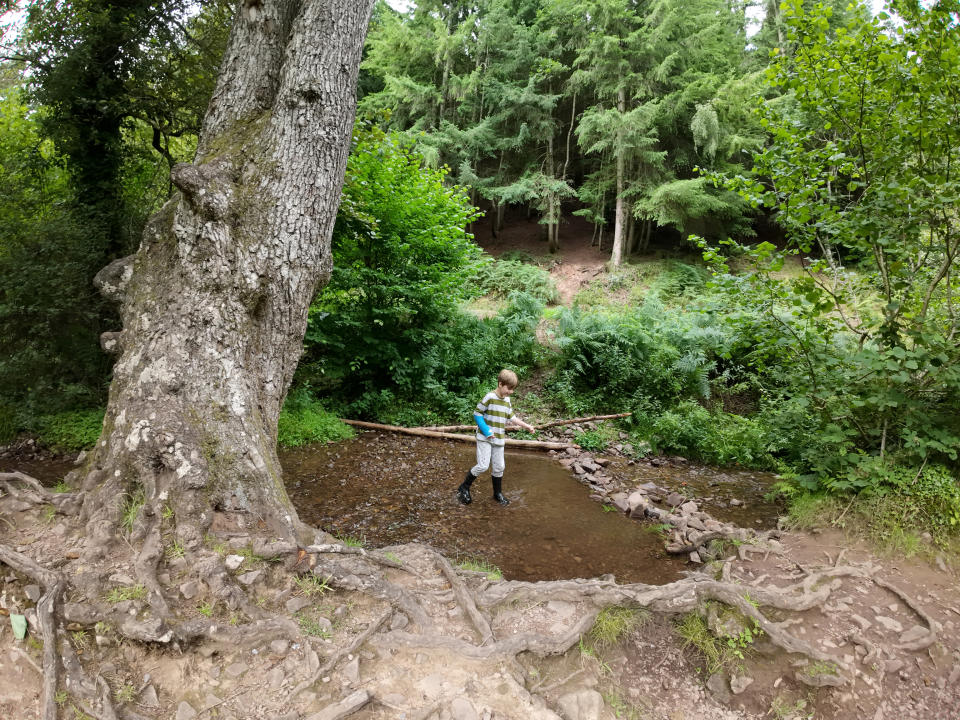
DJI's slow motion looks great, with up to 240fps at 1080P or 120FPS at 4K – another way of looking at that is 4x slow-mo at 4K, matching the GoPro.
The image stabilisation options are broadly similar to the GoPro Hero 11 Black – horizon balancing and image stabilization are available at 4K at the same resolutions and I was unable to fault them. Switching them on and off (and the way the camera disabled them when you ask for a higher frame rate) can happen by accident a bit too often for my liking – perhaps the camera ought to offer the option to prioritise your stabilisation setting over your resolution/frame rate one with a warning?
Quality wise, the is really good outdoors, even drifting into low light in the streams and trees, though recording my journey down the dimly lit office staircase I noticed that toward the edge of the frame you could see some elements where the algorithm was reaching its limits. Neverthless, it was handling the conditions better than I've seen many similar devices do.
Video samples
I wouldn't bore you with every test scenario, but the video gives a good mix of to-camera from the pole and some other experiments, mixing lighting and frame rate.
Overall verdict
The Osmo Action 4, in some circumstances, can reasonably unseat the famous GoPro's top-of-the-line Hero 11 Black, while lags behind in others. If you shoot in lower light (and that includes overnight timelapses) then DJI have unquestionably moved into the lead.
The larger sensor also provides a bigger area, even for images which are rotated, though the pixel resolution is lower, and there is no 5.3K option like the GoPro, so while the stabilization resolutions match, the established brad can give you more pixels, albeit granier in anything other than well lit environments.
GoPro's also has a slightly more refined ecosystem. The fold-down fingers for attachments might be seen as more elegant than DJI's chunkier equivalent. The other side of the locking screw all accessories are more or less interchangeable though in the action camera world, and for some DJI's magnet grip with clips is reassuringly solid.
So, it costs roughly the same as the GoPro Hero 11, it's better in low light, but it lacks some software equivalents and resolution. It's a tough choice. For general versatility this feels like the winner, but there are specific use cases in which GoPro still has the edge. Your move, GoPro.
Best GoPro alternatives
Best GoPro cameras
Best budget action cameras

